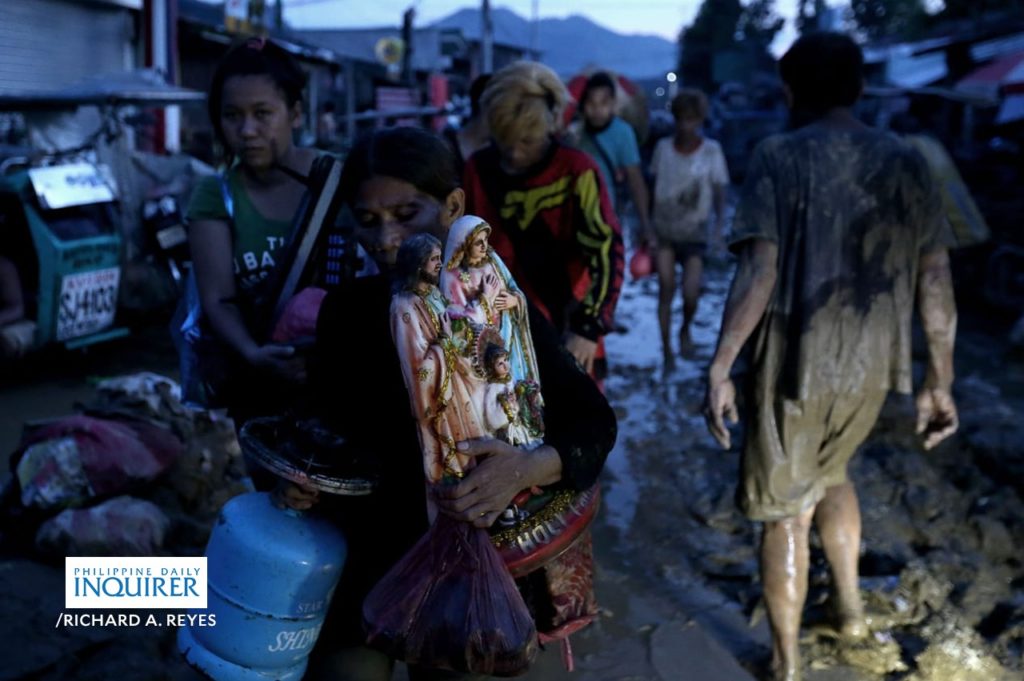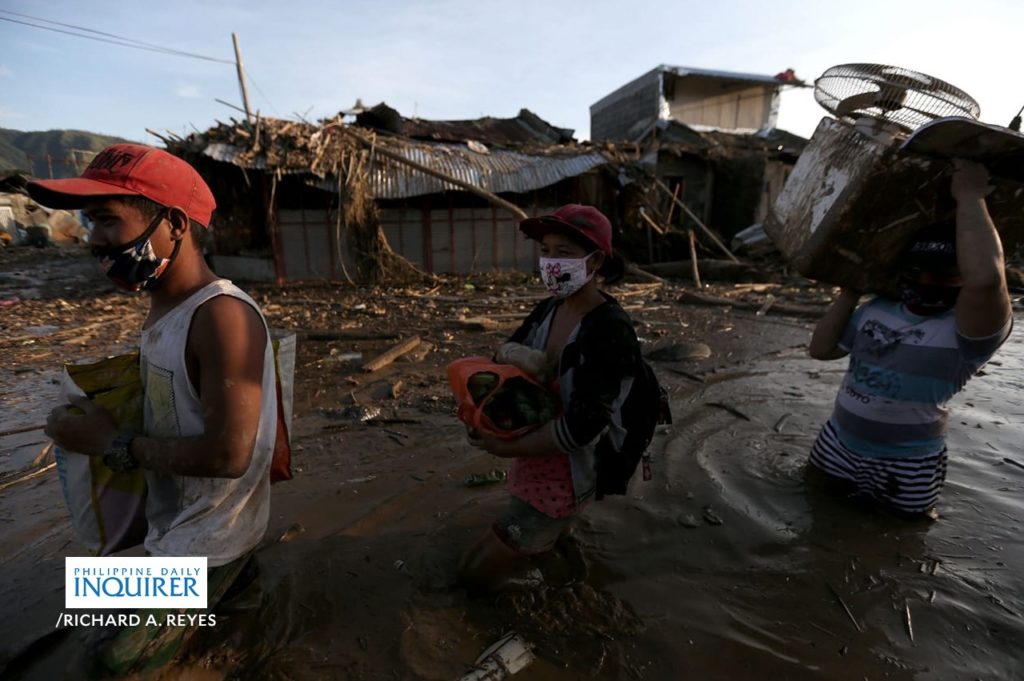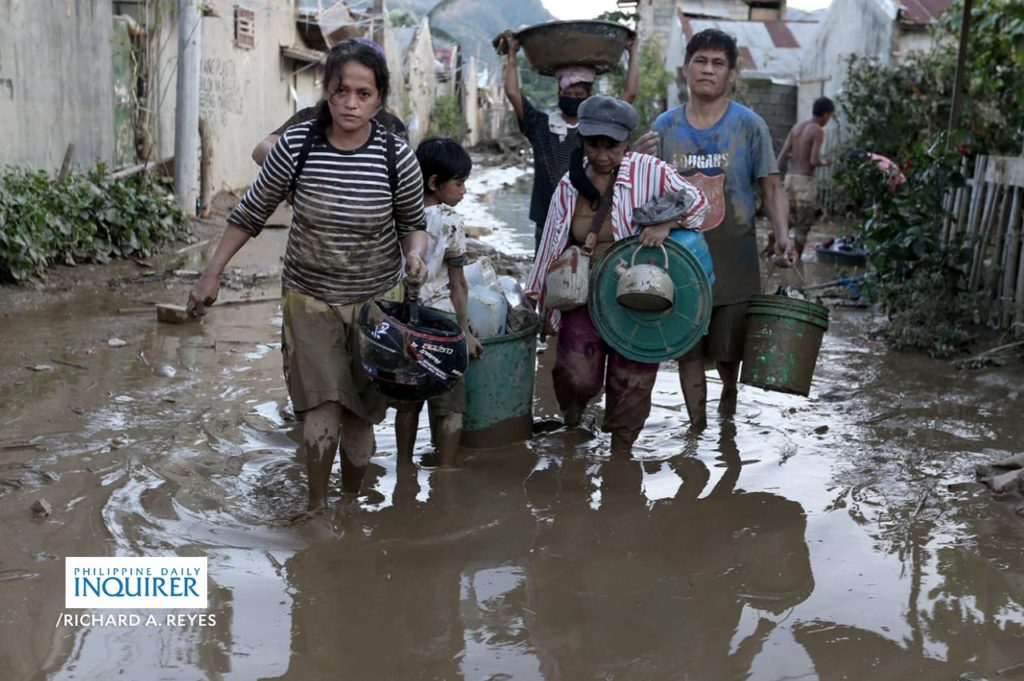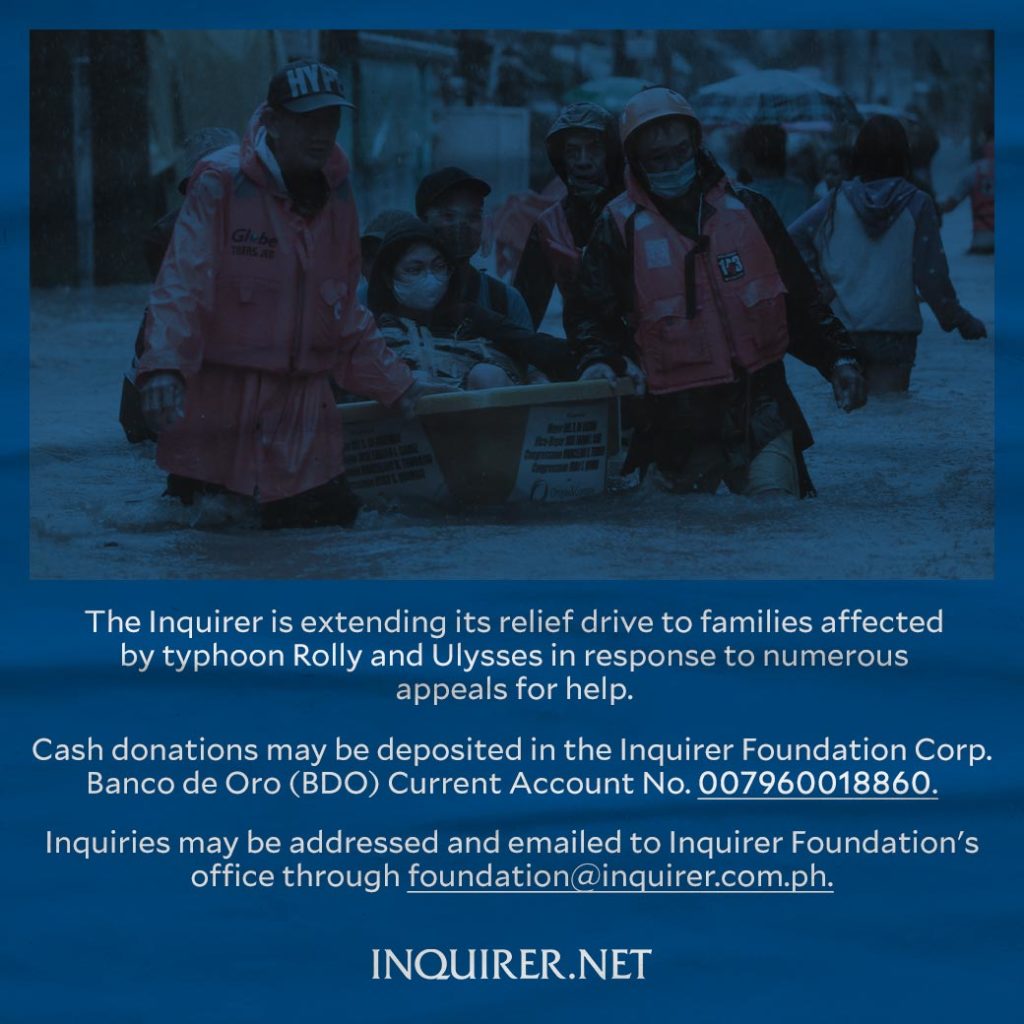Crowded shelters might cause COVID surge–DOH

MUD-SOAKED MASSES Typhoon evacuees return to their homes on Friday to retrieve belongings that might still be of use in Barangay San Jose, Rodriguez, Rizal province, one of the areas hardest hit by Typhoon “Ulysses.” —RICHARD A. REYES
The Department of Health (DOH) warned of a “very strong possibility” of local COVID-19 cases increasing further due to overcrowding in evacuation centers following the recent onslaught of Typhoon Ulysses (international name: Vamco).
At a press briefing on Friday, Health Secretary Francisco Duque III said the designated “safety officers [at the evacuation centers] should keep a close watch” and implement DOH instructions to make sure evacuees follow minimum health guidelines on COVID-19 prevention.
These include wearing protective masks, observing physical distancing and washing hands frequently.
Duque noted that evacuees were usually allowed to return to their homes once the storm had moved away from the country.
In school buildings and campus facilities being used as evacuation sites, it is advisable to have just one family per classroom or tent, he said.
The shelters should also be well-ventilated and have separate rooms for high-risk individuals, Duque said.
At another briefing on Friday, Health Undersecretary Maria Rosario Vergeire also issued a reminder to Ulysses evacuees.
“We should wear our face masks at all times,’’ she said. “We know it is very difficult to do in situations such as this, but we have to do it. It is through this that we can help prevent being infected.”
Local governments should help ensure that the evacuees are adequately supplied with face masks, adding that wet surgical or cloth masks should be replaced with medical-grade masks since they are no longer considered effective against the coronavirus.
Latest data from the Department of Social Welfare and Development (DSWD) show that a total of 40,518 families, or 156,995 people, have been affected by Ulysses in 648 villages in Metro Manila, Central Luzon, Calabarzon and Bicol regions.
Of those numbers, 18,818 families, or 70,294 people, were staying in 755 evacuation centers as of Friday.
Ulysses was the 21st storm to hit the country this year, according to the state weather service, which said three more storms might hit the country before year-end.
On Friday, the DOH recorded an additional 1,902 COVID-19 cases in the country, pushing the national tally to 404,713.

PLODDING THROUGH A day after Typhoon “Ulysses” laid waste to their community, these residents of Barangay San Jose in Rodriguez, Rizal, walk on muddy streets back to their village, to retrieve their belongings. Some wear face masks but others perhaps momentarily forget the threat of the coronavirus pandemic still in the air. —PHOTOS BY RICHARD A. REYES
Additional cases
Cavite reported the most number of new infections, 122, followed by Davao City (113), Quezon City (84), Bulacan (81) and Manila (78).
Of the 29 laboratories that failed to submit their data to the DOH on time, 22 were “affected by the typhoon.”
An additional 506 patients recovered, raising the total number of survivors to 362,903.
The death toll, however, rose to 7,752 as 31 patients succumbed to the severe respiratory disease.
The recoveries and deaths left the country with 34,058 active cases, of which 83.9 percent are mild, 9.4 percent asymptomatic, 0.12 percent moderate, 2.3 percent severe and 4.3 percent critical.
Apart from COVID-19, the DSWD and the DOH are also on guard against the outbreak of other illnesses, such as leptospirosis, acute gastroenteritis, diarrhea and acute dermatitis.
Vergeire urged local officials to ensure the supply of clean water to keep communities safe from these waterborne diseases.
Click here for more weather related news.
For more news about the novel coronavirus click here.
What you need to know about Coronavirus.
For more information on COVID-19, call the DOH Hotline: (02) 86517800 local 1149/1150.
The Inquirer Foundation supports our healthcare frontliners and is still accepting cash donations to be deposited at Banco de Oro (BDO) current account #007960018860 or donate through PayMaya using this link .
Disclaimer: The comments uploaded on this site do not necessarily represent or reflect the views of management and owner of Cebudailynews. We reserve the right to exclude comments that we deem to be inconsistent with our editorial standards.


